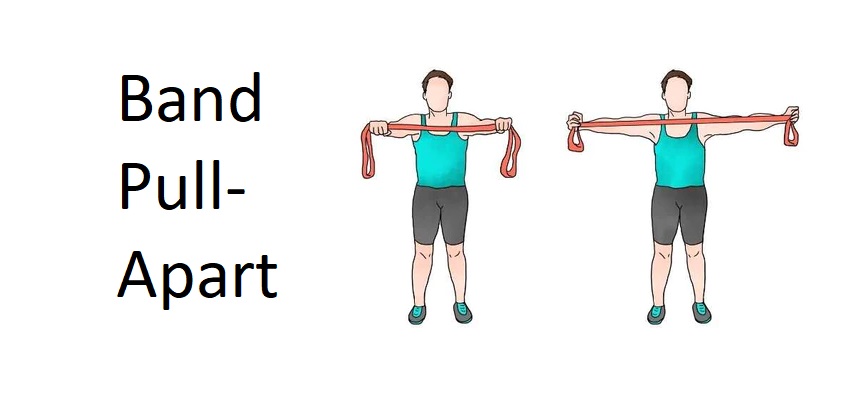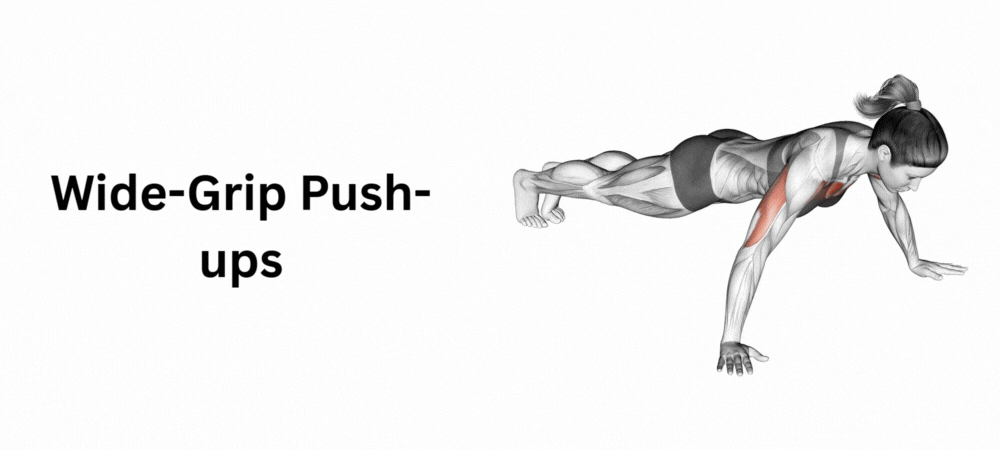Band Pull-Apart is an effective and versatile exercise that targets the upper back, shoulders, and arms. Also known as “Band Shoulder Retraction” or “Band Scapular Retraction,” this exercise is essential for enhancing shoulder stability, improving posture, and strengthening the upper body. In this comprehensive guide, we’ll delve into the correct technique, benefits, alternatives, and other important details associated with the Band Pull-Apart.
Instructions for Band Pull-Apart
Setup:
- Selecting the Resistance Band: Begin by choosing a resistance band that suits your fitness level. Hold the band with both hands, palms facing downward, and hands positioned shoulder-width apart.
- Positioning: Stand with your feet shoulder-width apart, knees slightly bent, and engage your core. Ensure that your back remains straight throughout the exercise.
Execution:
- Pulling Motion: As you exhale, pull the band apart by squeezing your shoulder blades together. Maintain straight arms and focus on activating the muscles of your upper back.
- Return Motion: Inhale as you slowly return to the starting position, maintaining tension in the band. Ensure a controlled movement throughout the exercise.
- Repetitions: Perform the desired number of repetitions with proper form and control.
Tips:
- Keep your shoulders relaxed and away from your ears.
- Avoid excessive shrugging or arching of the back.
- Execute smooth, controlled movements without jerking for momentum.
Muscles Worked
The Band Pull-Apart primarily targets the following muscles:
- Rhomboids
- Rear Deltoids
- Rotator Cuff Muscles
These muscles play a crucial role in scapular retraction and depression, which are essential for maintaining optimal shoulder mechanics and posture.
Benefits
- Shoulder Health: Strengthening the upper back and shoulder muscles improves shoulder stability, reducing the risk of injuries such as shoulder impingement.
- Posture Enhancement: Band Pull-Apart helps correct rounded shoulders and forward head posture, promoting better overall posture and alignment.
- Upper Body Strength: Targeting the rhomboids, rear deltoids, and rotator cuff muscles leads to improved upper body strength and muscle definition.
- Scapular Stability: Activating the muscles responsible for scapular stability enhances shoulder mechanics during various activities and exercises.
- Versatility: Band Pull-Apart can be performed anywhere with a resistance band, making it suitable for home workouts, travel, or rehabilitation.
Alternatives
To add variety to your upper body workout routine, consider these alternative exercises:
- Face Pull: Targets the rear deltoids, upper back, and rotator cuff muscles. Attach a resistance band to a fixed point at head height, and pull the band towards your face while keeping elbows high and shoulders back.
- Seated Row: Targets the mid and upper back muscles. Sit on a rowing machine or use a cable machine with a seated row attachment, and pull the handles towards your midsection while keeping your back straight and chest lifted.
- Reverse Fly: Targets the rear deltoids and upper back. Hold a pair of dumbbells or use a cable machine with D-handles, bend forward at the waist with a slight bend in the knees, then lift the weights out to the sides until arms are parallel to the ground.
- Dumbbell Row: Targets the mid and upper back muscles. Hold a dumbbell in each hand, hinge forward at the hips, keep your back flat, and pull the weights towards your sides, squeezing your shoulder blades together at the top of the movement.
- Chest Supported Row: Targets the mid and upper back muscles while reducing stress on the lower back. Lie face down on an incline bench with your chest supported, hold dumbbells or use a cable machine, and pull the weights towards your sides while keeping your elbows close to your body.
Alternate names for the exercise “Band Pull-Apart” include:
- Band Shoulder Retraction
- Resistance Band Reverse Fly
- Band Rear Delt Fly
- Band Reverse Pull
- Band Shoulder Blade Squeeze
Conclusion
Incorporating Band Pull-Apart into your workout routine provides a simple yet effective way to strengthen the upper back and shoulders, improve shoulder stability, and promote better posture. Focus on proper form, gradually increase resistance as needed, and diversify your exercises to ensure comprehensive upper body strength and function.
Also, check the Band Internal Shoulder Rotation








